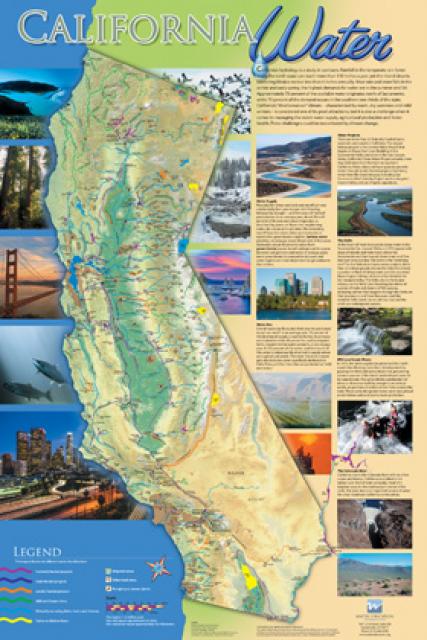Long Troubled Salton Sea May Finally Be Getting What it Most Needs: Action — And Money
WESTERN WATER NOTEBOOK: California's largest lake could see millions in potential funding to supercharge improvements to address long-delayed habitat and dust suppression needs
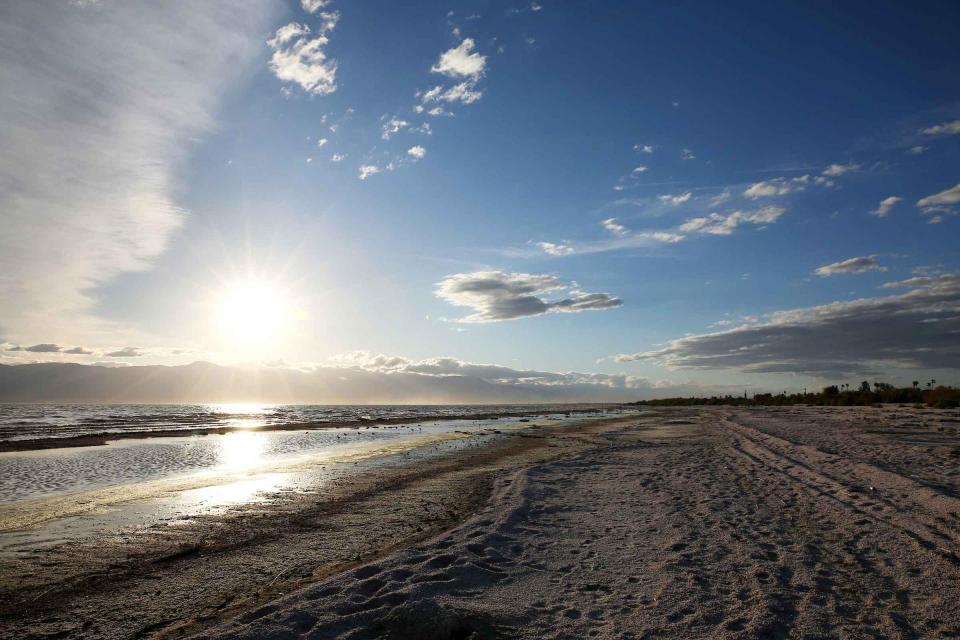 State work to improve wildlife habitat and tamp down dust at California’s ailing Salton Sea is finally moving forward. Now the sea may be on the verge of getting the vital ingredient needed to supercharge those restoration efforts – money.
State work to improve wildlife habitat and tamp down dust at California’s ailing Salton Sea is finally moving forward. Now the sea may be on the verge of getting the vital ingredient needed to supercharge those restoration efforts – money.
The shrinking desert lake has long been a trouble spot beset by rising salinity and unhealthy, lung-irritating dust blowing from its increasingly exposed bed. It shadows discussions of how to address the Colorado River’s two-decade-long drought because of its connection to the system. The lake is a festering health hazard to nearby residents, many of them impoverished, who struggle with elevated asthma risk as dust rises from the sea’s receding shoreline.
And in a state where most of the historic wetlands are gone, the sea is seen as an important stopover for migratory birds on the Pacific Flyway.
For years, the state has been obligated to do something about the sea but has struggled to take ownership of a restoration plan. Money has been spent on studies, consultants and community outreach while conditions deteriorated.
“It almost seems like securing the money is getting easier than getting these projects off the ground.”
~ Assemblyman Eduardo Garcia.
But there is movement. The state this year began work on a major 4,100-acre Species Conservation Habitat Project at the south end of the sea, the first part of its 10-year management plan issued in 2018. Michael Cohen, senior researcher with the Pacific Institute, called the state’s restoration work “a huge step forward” because it is the first time a project of its kind has turned dirt. The Pacific Institute monitors the sea’s daily fluctuation and has long advocated for a durable management plan.
The state also is examining proposals to bring in ocean water to the sea, which is twice as salty as the ocean. Meanwhile, growing interest in extracting the naturally occurring lithium beneath the crusty desert ground near the sea offers an enticing economic opportunity that could bring a windfall to fund restoration projects.
Now, the challenge is ensuring that the hundreds of millions of dollars in existing and prospective funds for the sea are directed toward actions that achieve results.
“It almost seems like securing the money is getting easier than getting these projects off the ground, and for many years getting the money was the hardest part for any effort along the Salton Sea,” Assemblyman Eduardo Garcia (D-Coachella) said during an online May 25 Salton Sea roundtable.
Creating a Sustainable Sea
Thirty-five miles long and 15 miles wide, the Salton Sea is California’s largest and most unique lake. Its surface area of about 325 square miles is almost twice that of Lake Tahoe in the Sierra Nevada.
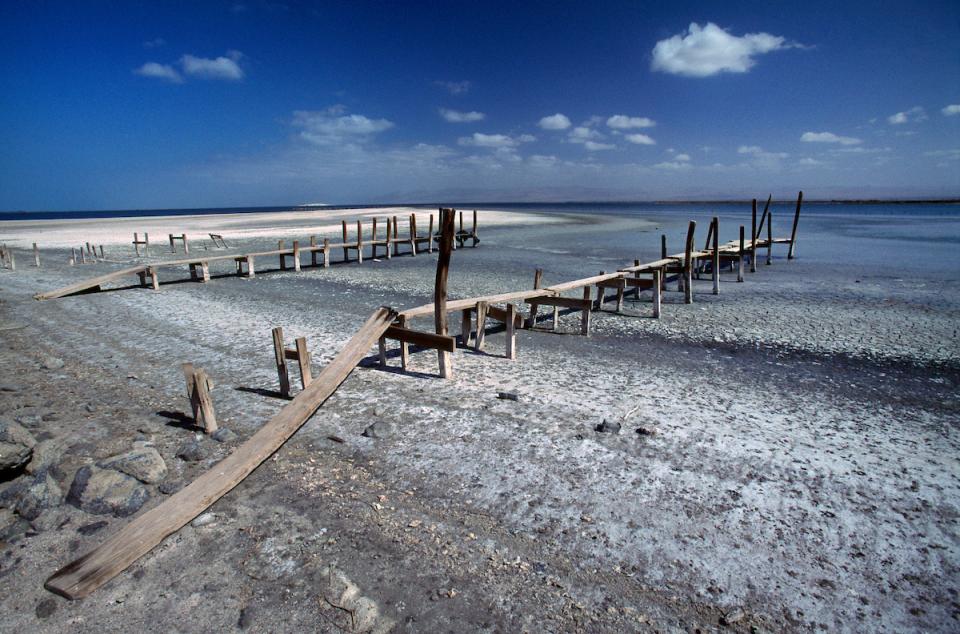 It’s an ancient lakebed that filled more than a century ago when a levee break unleashed a torrent of Colorado River water into a basin that the river had naturally reached at times in the past. More than 230 feet below sea level, it has no natural outlet. After the flood flows from the river stopped, the Salton Sea relied on the irrigation runoff from the farm-rich Imperial Valley. Today, the sea is often at the center of contentious issues involving the Colorado River.
It’s an ancient lakebed that filled more than a century ago when a levee break unleashed a torrent of Colorado River water into a basin that the river had naturally reached at times in the past. More than 230 feet below sea level, it has no natural outlet. After the flood flows from the river stopped, the Salton Sea relied on the irrigation runoff from the farm-rich Imperial Valley. Today, the sea is often at the center of contentious issues involving the Colorado River.
A historic 2003 plan for sharing Colorado River water featured the nation’s largest agriculture to urban water transfer, providing the Imperial Valley with water conservation improvements and sending the saved water to coastal Southern California.
The water transfer required the Imperial Irrigation District (IID) to provide mitigation flows for the sea to buy time until the state’s restoration effort got under way, but those flows ended in 2018. Since 2003, the sea’s elevation has dropped by about 10 feet and its surface area has shrunk by about 38 square miles.
As less farm runoff flowed to the sea, more of the shoreline was exposed to the desert winds, resulting in swirling clouds of dust that fouled the air in nearby communities. The dust has been blamed for driving up asthma-related emergency room visits to twice the state average. Rep. Raul Ruiz, whose constituents live near the sea, said toxic elements such as selenium in the playa dust represent a known health risk. “As an emergency medicine physician, I know firsthand the effects that particulate matter has on the human body,” he said at a recent congressional hearing.
State and local agencies are trying to solve the problem. Last year, the state completed 755 acres of dust control projects and more work is underway.
Funding Opportunities
The Salton Sea has benefited from millions of dollars in past budgetary allocations and bond funding, but the money has never been enough to yield visible progress. That’s changing, and the queue of potential new funding is impressive. Garcia is carrying a bond measure in the state Legislature intended for the June 2022 ballot that includes $240 million for sea-related projects. The state budget enacted earlier in July does not contain any new funding explicitly for the sea, but it does include $730 million for water and drought activities, some of which could be earmarked for the sea.
On the federal side, Ruiz is carrying legislation to increase the amount the Bureau of Reclamation is able to spend at the sea from $10 million to $250 million. Ruiz’ colleague, Rep. Juan Vargas (D-San Diego), is moving a bill that authorizes $3.2 million for various Salton Sea projects.
The prospect of an improved financial picture is encouraging to those long-accustomed to the inertia.
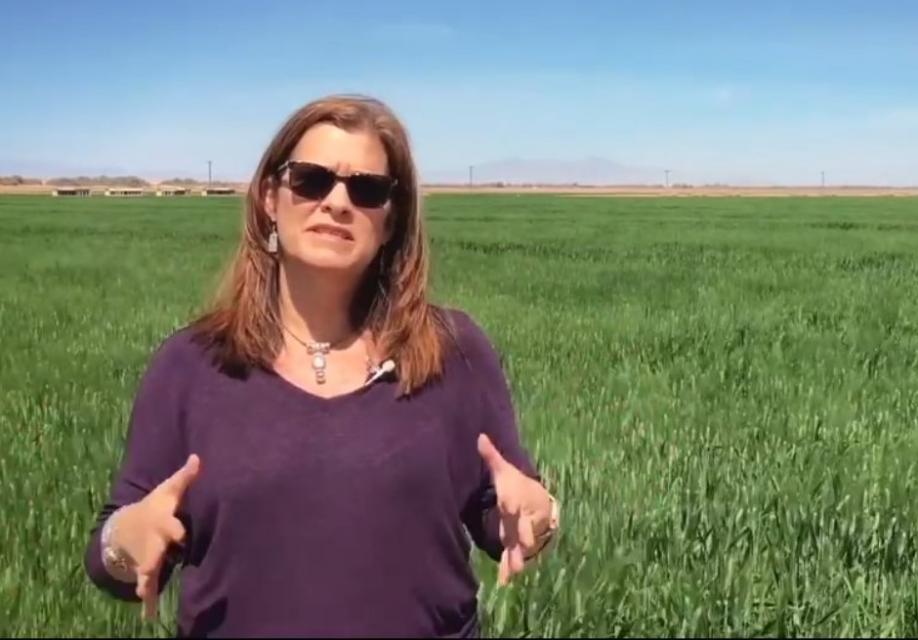 “We are definitely heartened to see all this attention has resulted in increased money,” said Tina Shields, water department manager with Imperial Irrigation District. The largest user of Colorado River water, the district has constantly urged the state to live up to its obligation to help the sea as required by the 2003 Quantification Settlement Agreement (QSA).
“We are definitely heartened to see all this attention has resulted in increased money,” said Tina Shields, water department manager with Imperial Irrigation District. The largest user of Colorado River water, the district has constantly urged the state to live up to its obligation to help the sea as required by the 2003 Quantification Settlement Agreement (QSA).
An intriguing possibility that could contribute to sea restoration funding has emerged because the area around the Salton Sea is rich in lithium, a metal that is a key component of electric vehicle technology. Lithium extraction fees could be directed to Salton Sea improvement projects and greater dust control.
Indeed, it appears the prospect of lithium extraction has merit. In early July, automotive giant General Motors announced a multimillion-dollar investment for a lithium project at the Salton Sea Geothermal Field near Imperial. The project could be the largest of its kind in the United States if it begins producing in 2024 as planned.
Building A Sustainable Salton Sea
State officials know they have some catching up to do. “Our focus now every day is to make demonstrable progress,” Resources Secretary Wade Crowfoot said at the May roundtable. The state aims to complete 30,000 acres of projects by 2028, with at least half of those habitat projects, such as ponds and wetlands. “We have to catch up to those acreage goals,” Crowfoot said.
The state’s 4,100-acre Species Conservation Habitat Project at the mouth of the New River anchors the 10-year Salton Sea management plan. The aim is to create aquatic habitat through a series of ponds to support fish-eating birds. The ponds will be filled by pumping water from the Salton Sea and mixing it with fresh water from the New River, providing a tolerable salinity level. The project also includes an interception ditch that will connect agricultural drains to support desert pupfish, listed as an endangered species by the state of California and the federal government.
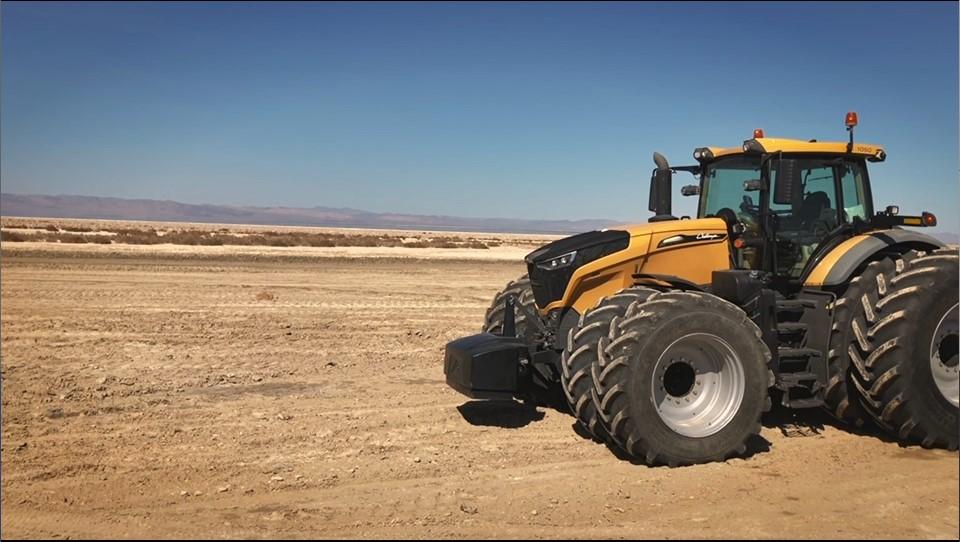 While much attention is focused on improving the Salton Sea near-shore habitat, some want to improve the sea itself – raising its elevation and halting its plunge toward hyper salinity.
While much attention is focused on improving the Salton Sea near-shore habitat, some want to improve the sea itself – raising its elevation and halting its plunge toward hyper salinity.
For decades, the idea of importing ocean water to the sea has been seen as a tantalizing possibility – but also a complicated and costly one. Nonetheless, the state has pledged to review the feasibility of several importation proposals and respond by the end of 2022.
Crowfoot said “there is obviously an attractive benefit” if one of the proposals pencils out but that the state needs to plan for managing the sea if water importation is not feasible.
Cohen with the Pacific Institute called the idea “aspirational and not really grounded in reality.”
Garcia, the state assemblyman, said the idea of importing ocean water from the Sea of Cortez to the Salton Sea is a distraction to more promising projects that could aid the sea. He added that in his conversations with Mexican lawmakers, the idea is not greeted warmly.
But any attempts to restore the Salton Sea defy easy implementation. The sea is crisscrossed with different landowners and agency jurisdictions. The Torres Martinez Desert Cahuilla tribe, for example, is the largest private landowner in and around the Salton Sea. And the array of agencies responsible for enforcing the many environmental laws and regulations means the pace of securing the necessary agreements and permits is slow.
Planning, designing and implementing work at the sea is rarely easy, said Shields with IID. What’s surprising, she said, is that the environmental work done for the ag-to-urban water transfer was only one step in managing the sea.
“I had no idea that we have to mitigate the mitigation,” she said. “It seems to me as long as you are doing something better than what’s out there, that should be good enough. But the permitting agencies don’t necessarily agree with that.”
What’s Next
While officials decide how state funds will be allocated and what the details of a long-term sea management plan look like, state and local officials will continue to triage the sea long enough to preserve its ecosystem functions and to limit dust emissions.
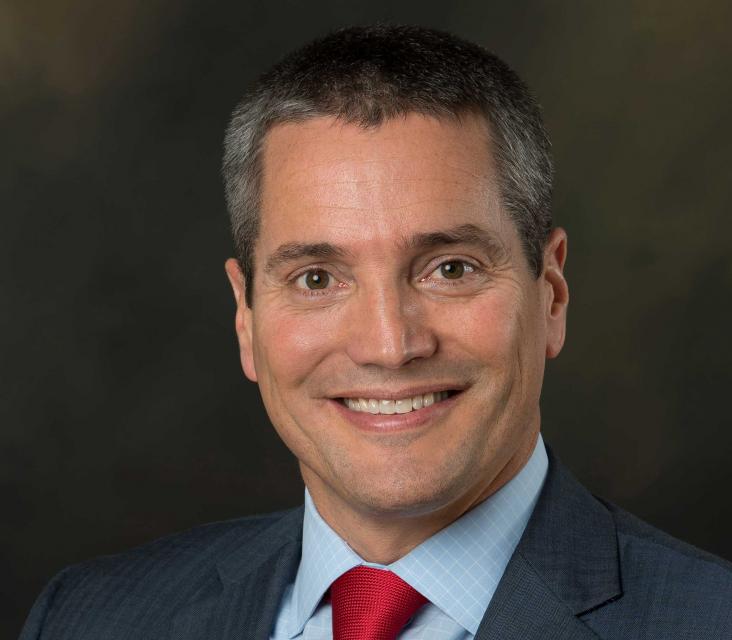 “Our focus on the species habitat conservation project is to show we can get projects done on the ground at the sea,” said Crowfoot, the resources secretary. “That demonstrates we can move forward. Frankly, we have to move forward on multiple projects at once.”
“Our focus on the species habitat conservation project is to show we can get projects done on the ground at the sea,” said Crowfoot, the resources secretary. “That demonstrates we can move forward. Frankly, we have to move forward on multiple projects at once.”
Cohen with the Pacific Institute said the state’s 2018 10-year plan for Salton Sea management is good in concept but needs more detail. The best approach, he said, is to expand the practice of capturing water and spreading it for habitat creation and dust control.
Patrick O’Dowd, executive director of the Salton Sea Authority, which works with state and federal agencies to revitalize the sea, said the sea needs a future that emphasizes how agencies can help make the area a safe place to live.
“We can’t look at it like we’re going to wake up tomorrow morning and all the problems are solved,” O’Dowd said. “We start with being honest and transparent about where the problems are and being able to demonstrate to the communities around the sea that [the problems] are being addressed.”
Shields, with Imperial Irrigation District, cautions people to be realistic and not expect a return of the sea’s glory days. Furthermore, the path between funding and work on the ground is often circuitous.
“I get it that folks are frustrated because there’s all this money and not a project to put it in,” she said. “It’s just a time lapse that has to occur.”
She added: “There’s nothing about the Salton Sea that is easy, or it would have been done decades ago.”
Reach Gary Pitzer: gpitzer@watereducation.org, Twitter: @GaryPitzer
Know someone else who wants to stay connected with water in the West? Encourage them to sign up for Western Water, and follow us on Facebook, Twitter, LinkedIn and Instagram.









